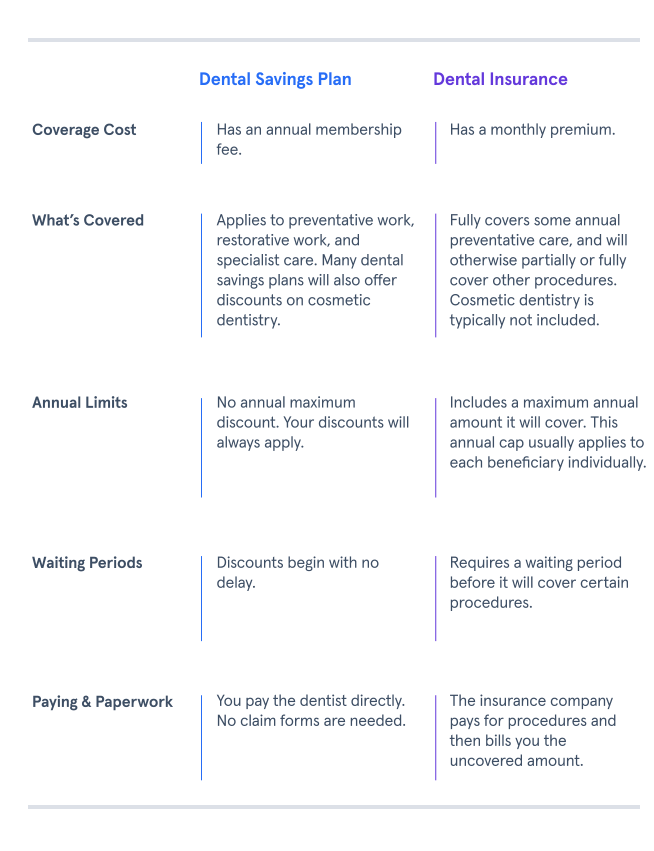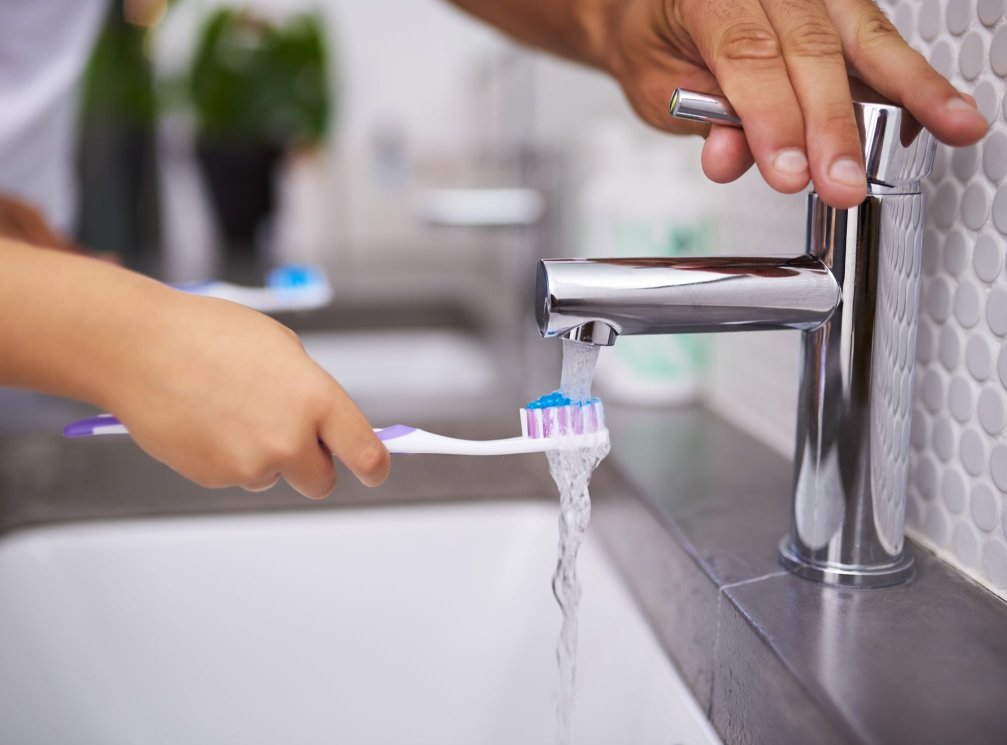
A trip to the dentist doesn't need to break the bank. You have options to help cut down on your out-of-pocket costs. A dental savings plan will discount a wide variety of services at your dentist for a single (usually low) annual fee. In contrast, traditional dental insurance offers direct coverage of costs for a monthly premium. So, when it comes to a dental savings plan vs insurance, which is right for you?
Those descriptions only just scratch the surface of each service, and it's worth delving a little deeper to find what'll best meet your needs. It may seem daunting, but don't let stress stop you from picking your best match. With our quick guide, you should be well on your way to finding a plan that will work for you. Read on to find out more!
Dental Savings Plan vs Insurance: How Do They Work?
Before we dive into the difference between dental insurance and a dental savings plan, let's break down how each one works.
How Does a Dental Savings Plan Work?
Sounds a little opaque, right? It might make more sense when you know that dental savings plans are also called dental discount plans. Simply put, a dental savings plan is a membership program that provides discounts on dental care at certain offices. It's not so far off from a membership at a club warehouse-style big-box retailer.
For an annual fee -- usually between $100 and $200 annually, depending on your enrollment type -- a dental savings plan will provide instant access to discounts on dental, orthodontic, and oral surgery services. These discounts won't completely cover the cost of any procedure, but you can still expect 10% to 60% off on visits.
How Does Traditional Dental Insurance Work?
Traditional dental insurance is a bit more complicated than a dental discount plan, but it still helps you to manage the cost of dental services. With dental insurance, the insurance company covers the cost of your procedures either full or in part. What they cover and by how much will vary from plan to plan, but you can expect to have preventative care like annual cleanings and exams covered fully.
Beneficiaries (that's you, the insurance holder) pay a monthly fee for enrollment. That's the premium; you’ve probably heard that term before. On top of the premium, with insurance, you may also be responsible for meeting a deductible or paying a copay.
A deductible is a fixed amount that must be met each year before insurance will begin to cover the costs of procedures. A copay, or copayment, is a fixed-amount fee paid by the beneficiary at the visit to cover a portion of the cost.
Dental Savings Plan vs Insurance: Which Is Best for Me?
Alright! Now that you know how dental insurance and dental savings plans work, it’s time to figure out which is best for you. Although they both serve the same purpose -- saving you money -- they’re quite different beyond that. Let’s compare the key features of each one.
The Differences
Coverage Cost
Dental savings plans require an annual membership fee. This cost will typically run between $100 and $200 annually, depending on the type of plan. Family plans will be slightly more expensive than individual plans.
Dental insurance has a monthly premium, typically between $200 and $600 annually, or between $15 and $50 dollars a month. Additionally, depending on the plan, beneficiaries may be responsible for meeting a deductible before services will be covered or for a copay at the time of visit.
What’s Covered
Dental savings plans apply to preventative work, restorative work, and specialist care. Many dental savings plans will also offer discounts on cosmetic dentistry. You can expect discounts ranging from 10% to 60%, but a dental savings plan is never going to cover the cost of a procedure fully.
Most dental insurance will fully cover some annual preventative care, and will otherwise partially or fully cover other procedures. Cosmetic dentistry is typically not included.
Annual Limits
Dental savings plans have no annual maximum discount. Your discounts will always apply.
Dental insurance includes a maximum annual amount it will cover. This annual cap usually applies to each beneficiary individually.
Waiting Periods
Once you’re enrolled in a dental savings plan, your discounts will begin with no delay.
Dental insurance typically requires a waiting period before it will cover certain procedures like root canals.
Paying and Paperwork
With a dental savings plan, you pay the dentist directly. No claim forms are needed.
With dental insurance, the insurance company pays for procedures and then bills you the uncovered amount. Outside of a copay paid to the dentist’s office, you will be working with the insurance company on your bill.

The Similarities
Both dental savings plans and dental insurance will only work with particular providers. You’ll have to check your plan details to make sure you’re seeing a dentist who is in-network.
While the amount varies, both types must be renewed either annually or monthly and have fees for membership/coverage.
Both dental savings plans and dental insurance will lower your out-of-pocket costs on a variety of dental procedures.
Dental Savings Plan vs Insurance: Which Do I Need?
If you are on Medicare, a dental savings plan will cut the cost of dental care where Medicare would not.
If you need coverage for multiple people, you may want to consider traditional insurance. The annual cap applies per person, meaning larger families won’t necessarily meet caps sooner.
If you are looking for services classified as cosmetic dentistry, a dental savings plan is more likely to discount those.
If you need very little dental work and only visit for twice-yearly cleanings, you may save money with a dental savings plan as the annual fee will likely be lower than an insurance premium.
If you have ongoing dental issues or are making frequent trips to the dentist, traditional insurance will wind up saving you more in the long run.
That said, you should be aware of how much dental work you need. If your dental visits are going to exceed your insurance’s annual limit, a combination of a dental savings plan and traditional insurance could save you money.
Wrapping Up
Now that you’ve got a better idea of how dental savings plans and dental insurance work, it’s time to decide which option fits your needs best. Got a good idea of which you’re going to go with? Great! It’s still important to shop around and make sure you’re getting something that really works for you.
You can start your search online at the Health Insurance Marketplace or sites like DentalPlans.com. Another option may be to call your local dentist’s office directly and ask them what plans and insurance they accept. Wherever you wind up going, we hope our guide helped you find your way.







